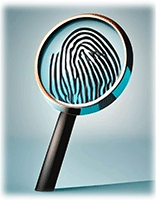Romance and Pig Butchering Scams: History, Impact, and Prevention
By Eina JL Schroeder, CAMS/CFCS

Romance Scams
Imagine your single, ready to mingle and hop on a well-known dating site or two. Or maybe you’re cruising through social media and some hot person sends you a message. Perhaps you struck up a romance through that “accidental” text message that came in and you responded to. How ever you started your new romance, they’re the one, perfect in every way. The way they look, the things they say, the time you spend together getting to know one another, the sound of their voice. Next thing you know you’re in love. They’re in love with you. It’s so wonderful, and dreamy. You’ve messaged, you’ve talked on the phone, you’ve even had video calls. Some might have been rough, but others perfect. Until one day your romance becomes insidious. Like a slow gas leak before a crisis hits: an auto accident, jail, lost wallet. They need money, now, to get out of this jam. They have plenty of money, the promise to pay you back. For some great excuses you brush off, they never do. Your money is gone. You’re in love. You think nothing of it and send money. Every time. Rinse, Lather, Repeat. One day you realize you are deep in debt; you may have even lost the roof over your head and have nothing left to live on in retirement. You’ve been had. As soon as the scammer either knows they have sucked every ounce of money they can from you or you caught on sooner, they turn on a dime. Some have the gall to say nasty, crude and indelicate things to their victims, some simply vanish. This was a romance scam. However short, or long, the impact is the same: heartbreak and robbery.
Pig Butchering Scams
You met this cool new friend. Could be online, could have been in person. They heard you’re into investing and they think you’d like to get in on this investing platform they use that’s been making them lots of money. It’s cryptocurrency (or maybe Forex). Not to worry though, they’ll teach you everything you need to know, it’s simple. You’ll be doing this on a well-known trading platform, so it’s safe. They even give you a link to the platform so you don’t have to hunt for it. So helpful. You happily install the app, enter your bank account information and transfer a small amount in. Wonders of all wonders! You’re already making a hefty profit! You transfer in more, the cycle continues. You’re going to be rich! One day you go to login to the trading platform and you can’t. It’s gone. Poof. Along with all your money. You’ve been fattened up and pig butchered — robbed!
Increasing prevalence and financial impact
While these stories are shortened for example purposes, the outcome is the same. All your money is gone. Taken away by a talented grifter who has either spent years honing their manipulations or learning from a master. You were an easy target, now poorer, while they are richer. If people start thinking before parting with their money these instances wouldn’t be so profitable and continue to proliferate. In 2021, the IC3 received reports from 24,299 victims who experienced more than $956 million in losses to Confidence Fraud/Romance scams (https://www.ic3.gov/Media/PDF/AnnualReport/2021_IC3Report.pdf). While pig butchering is newer and less widely reported, these scams have seen explosive growth. Most recently KCRG reports that Pig Butchering scams have reached a crisis level (https://www.kcrg.com/video/2024/09/19/pig-butchering-scam-has-reached-crisis-level). Beware of people who start messaging on dating apps, professional platforms, social networking or text and then want to move the conversation to WhatsApp or some other secure chat platform. None of these people are up to any good. Be suspicious, be wary, hold tight to your money and don’t let it go. Don’t fall in love with someone you have never spent time with in real life, outside of the internet, chats and video calls. Video calls can also be faked with AI. Globally, losses are estimated to be in the billions of dollars annually for what romance scammer rake in. With pig butchering scams, individual losses can be extremely high, with some victims reporting losses in the hundreds of thousands or even millions of dollars. Combined, these scams are responsible for billions in losses annually. The emotional and psychological impact on victims is significant and long-lasting. This can happen to both young and old alike. It’s important to note that these figures likely underestimate the true impact, as many victims feel too embarrassed to report their losses or may not realize they’ve been scammed.
Origins of romance scams
How did romance scams even start? Well, romance scams emerged in the early 1990s with the rise of the internet, evolving alongside online communication platforms. As email and chat rooms gained popularity, scammers adapted traditional fraud techniques to this new medium. The launch of dating websites in the late 1990s, such as Match.com in 1995, provided fertile ground for these scams to flourish. Fraudsters created fake profiles to lure unsuspecting users, gradually developing more sophisticated tactics. They crafted elaborate backstories, used stolen photos, and exploited the concept of long-distance relationships to explain the impossibility of in-person meetings. The early 2000s saw further refinement of these techniques, with scammers taking advantage of the increasing willingness of people to form romantic connections online. As the internet became more globally accessible, these scams spread internationally, often originating from countries like Nigeria, adapting tactics from earlier email fraud schemes to the realm of online romance.
Emergence of pig butchering scams
Pig butchering scams emerged in the late 2010s, originating primarily in Southeast Asia before spreading globally. These scams represent a more sophisticated evolution of traditional romance and investment fraud. Unlike typical romance scams, pig butchering involves a longer-term approach where scammers “fatten up” their victims before “slaughtering” them financially. The name derives from this metaphor. These scams gained significant traction with the rise of cryptocurrency and the COVID-19 pandemic, which increased online interactions and financial vulnerabilities. Scammers initiate contact through various means, including wrong number texts, social media, or dating apps, and build trust over time. They then introduce seemingly lucrative investment opportunities, often involving cryptocurrency or forex trading. Using fake trading platforms and manipulated returns, they encourage victims to invest increasingly large sums before disappearing with the funds. The complexity and long-term nature of these scams often result in much higher individual losses compared to traditional romance scams.
Technological Facilitation
Technology has been a key enabler for romance and pig butchering scams, significantly enhancing their reach and effectiveness. The internet, social media platforms, and dating apps have provided scammers with a vast pool of potential victims and easy means of initial contact. Sophisticated fake profiles, using stolen photos and AI-generated images, help create convincing online personas. Encrypted messaging apps allow for private, untraceable communications. Digital payment systems, particularly cryptocurrencies, facilitate anonymous money transfers. Additionally, scammers exploit data breaches to obtain personal information for more targeted approaches. The global nature of the internet also makes it challenging for law enforcement to track and prosecute these criminals across international borders.
How Romance Scams Work
So you wanted a romance? One for the ages. You wanted to be proud of this perfect partner you found online. You’re so lucky and want to share it with the world. This isn’t a scam, it can’t be, you‘ll die on this hill. These scams work because romance scammers skillfully build emotional connections with their victims before exploiting them for financial gain. They begin by creating attractive online profiles and initiating contact through dating sites, social media, or apps. The scammer quickly establishes rapport by identifying common interests and showering the victim with attention and affection, a technique known as “love bombing.” They share personal stories, often involving tragedy or hardship, to evoke sympathy and deepen the emotional bond. Regular communication and promises of a future together further strengthen the victim’s attachment. Once a strong emotional connection is established, the scammer invents a crisis or opportunity that requires financial assistance. Exploiting the victim’s feelings of love and trust, they manipulate them into sending money. This cycle may continue with new crises and requests, or the scammer may disappear once they’ve extracted maximum funds. The process preys on fundamental human needs for connection and the desire to help loved ones, making it a particularly effective and damaging form of fraud. Then, you’re left heartbroken and penniless.
How Pig-Butchering Works
On the other end, maybe you’re just looking to fatten your portfolio. Invest in good stocks with a great return. Maybe you’re saving for a nice vacation, or retirement. You may even be living off the dividends you’re making now. You’re in investment clubs, dabbling in research, reaching out to other investors for tips and tricks. Then the trickster comes in.
Pig butchering scammers groom victims for long-term financial exploitation through a carefully orchestrated process:
The scammer initiates contact, often through a seemingly innocuous message or “wrong number” text. They cultivate a friendly or romantic relationship over weeks or months, building trust and rapport without rushing to financial discussions. This relationship may remain platonic or develop romantic undertones, depending on the victim’s receptiveness.
Once trust is established, the scammer introduces the idea of investments, typically in cryptocurrency or forex trading. They present themselves as financially successful and offer to “help” the victim achieve similar success. The scammer guides the victim through setting up accounts on legitimate-looking (but fraudulent) investment platforms.
Initially, they encourage small investments and may allow the victim to withdraw profits, building confidence in the scheme. As trust grows, they push for larger investments, often using psychological tactics to create a fear of missing out on lucrative opportunities. The scammer continually reassures the victim, addressing any doubts with plausible explanations.
This grooming process can last for months, with the scammer patiently “fattening up” the victim before going for the big “slaughter” — either by encouraging a massive investment or slowly draining the victim’s resources over time. When the victim can no longer invest or becomes suspicious, the scammer disappears with all the funds, leaving the victim with substantial financial losses.
Common Tactics Used Against The Victim
Scammers will employ a range of common tactics to deceive and manipulate their victims. They often create fake online profiles using stolen photos and fabricated personal information to appear attractive and credible. Love bombing is a frequent strategy, where scammers shower victims with affection and attention to quickly build trust. They craft compelling backstories, often involving tragic circumstances or lucrative career opportunities, to evoke sympathy or admiration. Scammers frequently claim to be working or traveling abroad to explain their inability to meet in person. They use isolation tactics, encouraging victims to keep the relationship secret from friends and family. Urgency and pressure are applied when requesting money, citing emergencies or time-sensitive investments. Scammers also manipulate victims’ emotions, alternating between expressions of love and creating guilt or fear. They often use scripts and work in teams to maintain consistent, convincing communication. Additionally, they exploit current events and trends to make their stories more believable and relevant.
Far-Reaching Consequences
The ramifications of romance and pig butchering scams extend far beyond immediate financial losses, impacting victims on multiple levels. Financially, victims often suffer devastating losses, with some individuals losing their life savings or incurring significant debt. The emotional and psychological toll is equally severe, leaving victims with broken trust, depression, anxiety, and in some cases, suicidal thoughts. Many experience shame and isolation, reluctant to share their experiences with friends and family. These scams can damage personal relationships, as victims may have borrowed money from loved ones or neglected other relationships during the scam. Long-term effects include difficulty forming new relationships and persistent financial instability. On a broader scale, these scams erode trust in online interactions and legitimate financial platforms, potentially hampering digital economic growth. They also strain law enforcement resources and can fund other criminal activities. The collective impact of these scams represents a significant drain on global economies and individual well-being, with repercussions that can last for years after the initial fraud.
Prevent/Protect/Spread Awareness
Prevention and protection against romance and pig butchering scams focus on awareness, caution, and proactive measures. Key strategies include:
· Educating yourself about common scam tactics and red flags.
· Verifying the identity of online contacts through video calls or in-person meetings.
· Conducting reverse image searches on profile pictures.
· Being skeptical of requests for money or personal information.
· Researching investment opportunities thoroughly and independently.
· Avoiding sharing financial details or making investments based solely on online advice.
· Maintaining open communication with friends and family about new relationships.
· Using reputable dating sites with safety features.
· Being wary of individuals who refuse to meet in person or always have excuses.
· Trusting your instincts if something feels off.
Additionally, it’s crucial to report suspected scams to local authorities, relevant online platforms, and financial institutions. If victimized, seek support from trusted individuals and consider professional counseling. Remember, legitimate romantic interests will never ask for money, and authentic investment opportunities don’t require secrecy or pressure tactics.
Conclusion
Romance and pig butchering scams are sophisticated forms of fraud that exploit human emotions and desires for connection and financial gain. These scams have evolved with technology, becoming increasingly prevalent and damaging. Key points to remember: scammers build trust over time, use elaborate backstories, and often claim to be in distant locations. They eventually request money for emergencies or entice victims into fraudulent investments. The impact of these scams extends beyond financial losses, causing severe emotional distress and eroding trust in online interactions. Prevention is crucial: always verify identities, be skeptical of unsolicited contacts, never send money to people you haven’t met in person, and research thoroughly before making any investments. Stay vigilant and trust your instincts. If something seems too good to be true, it probably is. We all have a role to play in combating these scams. Spread awareness by sharing information with friends and family, especially those who might be vulnerable. Report suspicious activities to relevant authorities and platforms. By staying informed and alert, we can collectively reduce the impact of these harmful scams and protect our communities

I’m an experienced professional with a diverse skill set spanning governance, risk, and compliance (GRC), financial crimes prevention, and technical support for over 20 years. I have a proven track record in implementing robust GRC frameworks, conducting risk assessments, and ensuring regulatory compliance. My expertise in anti-money laundering (AML) and fraud detection strategies within the financial sector has been an amazing and rewarding journey. I am proficient in PC hardware diagnostics, repair, and maintenance, with a strong foundation in IT troubleshooting and digital investigations. My ability to combine analytical thinking with technical aptitude enables me to drive effective solutions across multiple domains and organizations. https://einajlschroeder.com







